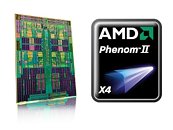- Joined
- Oct 9, 2007
- Messages
- 47,895 (7.38/day)
- Location
- Dublin, Ireland
| System Name | RBMK-1000 |
|---|---|
| Processor | AMD Ryzen 7 5700G |
| Motherboard | Gigabyte B550 AORUS Elite V2 |
| Cooling | DeepCool Gammax L240 V2 |
| Memory | 2x 16GB DDR4-3200 |
| Video Card(s) | Galax RTX 4070 Ti EX |
| Storage | Samsung 990 1TB |
| Display(s) | BenQ 1440p 60 Hz 27-inch |
| Case | Corsair Carbide 100R |
| Audio Device(s) | ASUS SupremeFX S1220A |
| Power Supply | Cooler Master MWE Gold 650W |
| Mouse | ASUS ROG Strix Impact |
| Keyboard | Gamdias Hermes E2 |
| Software | Windows 11 Pro |
The years 2007 and 2008 have been quite tough for AMD when it came to client CPU market. Its Barcelona K10 "Stars" micro-architecture, while not being able to lead Intel technologically, eventually got implemented into various processor SKUs. AMD carved several triple-core and dual-core processors out of a standard K10 die design by changing the count of available processing cores.
With the upcoming 45nm Phenom II and Athlon series, AMD is planning two primary die designs: those with the L3 cache, and those without. Sources suggest that AMD won't be carving out dual-core chips by disabling two cores from a quad-core die (for the Regor core). This is indicated by the estimated die sizes of some of the 45nm AMD desktop cores according to Macadamia from XtremeSystems. The Deneb core is sized at 243 sq. mm, with 140 sq. mm for the Propus core, followed by ~80 sq. mm for Regor. The die-size difference between the Deneb and Propus cores comes from the fact that the former carries a large 6144 KB L3. A lot can be inferred from these die-sizes. Ideally for the smaller core (Propus), the L3 cache is physically lacking, and not merely present but disabled. This could result in the chip having a lesser energy draw. AMD has a string of product-launches in the first half of 2009, that includes the Propus core under the Athlon X4 banner.

View at TechPowerUp Main Site
With the upcoming 45nm Phenom II and Athlon series, AMD is planning two primary die designs: those with the L3 cache, and those without. Sources suggest that AMD won't be carving out dual-core chips by disabling two cores from a quad-core die (for the Regor core). This is indicated by the estimated die sizes of some of the 45nm AMD desktop cores according to Macadamia from XtremeSystems. The Deneb core is sized at 243 sq. mm, with 140 sq. mm for the Propus core, followed by ~80 sq. mm for Regor. The die-size difference between the Deneb and Propus cores comes from the fact that the former carries a large 6144 KB L3. A lot can be inferred from these die-sizes. Ideally for the smaller core (Propus), the L3 cache is physically lacking, and not merely present but disabled. This could result in the chip having a lesser energy draw. AMD has a string of product-launches in the first half of 2009, that includes the Propus core under the Athlon X4 banner.

View at TechPowerUp Main Site




